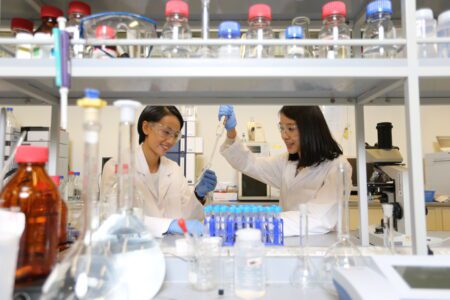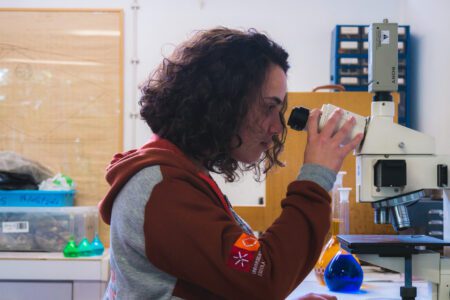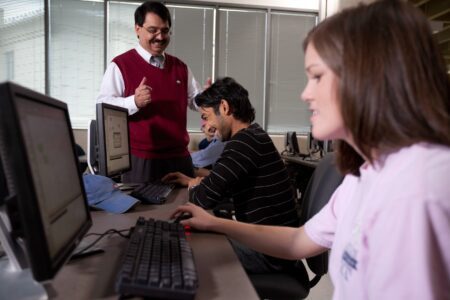
Digital innovations are becoming a key part of daily life. From Teslas on the road to AI chatbots like ChatGPT and Google Gemini, technology is rapidly reshaping industries.
Behind every breakthrough are skilled engineers who turn ideas into reality. A good engineering college with innovative programmes and research opportunities can help turn students into the kind of engineers capable of leading this change.
Good schools have programmes that combine hands-on experience with research-led teaching help students solve real-world problems. But adding research adds a vital skillst. When students get involved in projects like developing safer batteries or using AI for disaster prediction, they understand how labs work and how labs can empower engineering to improve lives.
Here are three institutions offering environments that elevate engineering talent:

Source: Cleveland State University
Cleveland State University
Engineering and technology have long shaped how we live and work, driving much of the progress in our world. Since 1923, the Washkewicz College of Engineering (WCE) has played a key role in this. It’s part of Cleveland State University (CSU), ranked 18th in the US by the Brookings Institution for providing social mobility for their students and conducting vital research that benefits society. It is the only Ohio university ranked in the “Best of the Best” category.
This achievement is built on the university’s long and rich tradition of cutting-edge research – many of which are led by WCE faculty. The college works closely with top organisations like NASA Glenn Research Centre, the Cleveland Clinic, local industry and multiple federal agencies. They specialise in areas that include biomedical engineering, advanced materials, data science, and aerospace engineering. Recently, there has been significant growth in research funding, with faculty earning major grants from the National Institutes of Health and the National Science Foundation. This momentum drives collaboration within and beyond the college, sparking even more new ideas and innovations.
It’s the ideal environment for anyone interested in applying engineering fundamentals to the solution of complex technical problems. The Washkewicz College offers MS and PhD degrees across multiple engineering disciplines. Whichever you choose, you’ll learn from faculty who are highly qualified and active in research, teaching, and mentoring. Resources are extensive, ranking from advising and peer tutoring to mentoring programmes. Beyond academics, there are co-op placements, honours and leadership programmes, faculty-led research projects, and various extracurricular activities, including technical competitions, as well. Want to expand your engineering knowledge and improve lives? Apply to the Washkewicz College of Engineering today.

Texas A&M University’s College of Engineering students, faculty, and alumni are making a difference worldwide through research that shapes future technologies. Source: Texas A&M University/Facebook
Texas A&M University
Many spacecrafts fly only once. Even NASA’s Discovery, the most-used space shuttle, completed just 39 missions, each followed by months of repairs. As space travel grows, so does the need for spacecrafts that can fly repeatedly. That’s why researchers at the Department of Aerospace Engineering at Texas A&M University work with Canopy Aerospace to develop a game-changing solution: a 3D-printed material that “sweats” coolant gas. Backed by a US$1.7 million Air Force Small Business Technology Transfer grant, this new material could protect spacecraft during re-entry and pave the way for rapid reuse.
This is just one example of the kind of forward-thinking innovation happening at Texas A&M’s College of Engineering. Since its founding in 1876, engineering has been at the heart of the university’s mission. Today, the College of Engineering is the largest on the College Station campus and regularly ranks among the top public engineering programmes, according to US News & World Report. The college currently holds the ninth spot for top public graduate engineering programmes, including petroleum engineering (second), industrial and systems engineering (fifth), aerospace engineering (sixth), and many more.
Through collaborations with the Texas A&M Engineering Experiment Station and industry leaders, the college is tackling global challenges while giving students real-world experience in solving them. Its research spans vital areas like AI, robotics, health care, national security, and materials science.
What sets Texas A&M apart is its strong foundation in technologies like modelling and simulation, mechanics, sensors, and process engineering. These tools support work that appears in top journals, earns patents, and shapes the next generation of engineering leaders. At its core, Texas A&M Engineering is about turning ideas into solutions, whether that’s a spacecraft built to fly again or technologies that improve life on Earth.

Oregon State University is one of only three US universities with land, sun, sea, and space grant designations. Source: Oregon State University/Facebook
Oregon State University
At Oregon State University’s College of Engineering, big ideas become real solutions. It’s where experts from nearly every major engineering discipline come together with one goal: to create a better future for people and the planet. From bioreactors to bridges, robots to renewable energy systems, Oregon State engineers are redefining what’s possible through innovation and impact.
Since its founding in 1889, the college has been the launchpad of scientific breakthroughs and inspiring generations of engineers. Over the years, Oregon State has built a reputation for producing engineers who double as leaders committed to the public good.
With a wide range of degree options — including artificial intelligence, civil engineering, bioengineering, industrial engineering, and materials science — programmes here free students to follow their curiosity and shape their own paths. Whether they’re interested in exploring outer space, building resilient infrastructure, or working on climate solutions, the College of Engineering offers the foundation and flexibility to do it all.
The focus here here is clear: creating technology that is reliable, sustainable, and accessible to everyone. Oregon State engineers tackle real problems with practical solutions. That might mean creating clean-burning cookstoves for rural communities or developing hydrogen energy using cutting-edge catalysts.
Research plays a central role in this hands-on, forward-thinking approach. The university’s rare land, sun, sea, and space grant designations open doors to interdisciplinary collaboration. Students and faculty regularly team up with experts in fields like forestry, oceanography, public health, and business. They also partner with national labs, energy companies, and high-tech firms to bring real-world impact to their work.
*Some of the institutions featured in this article are commercial partners of Study International










